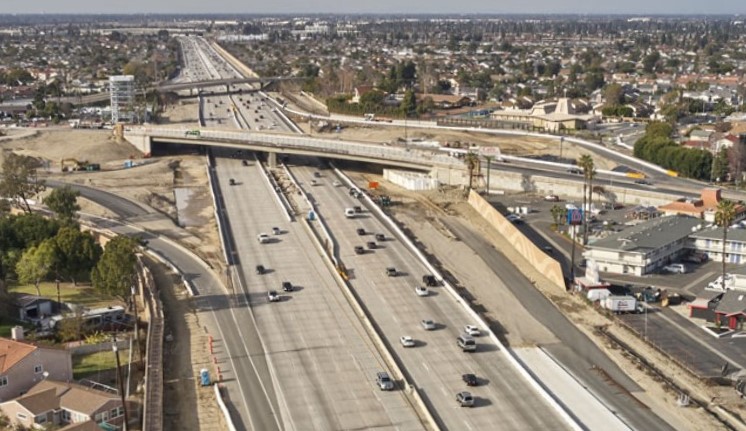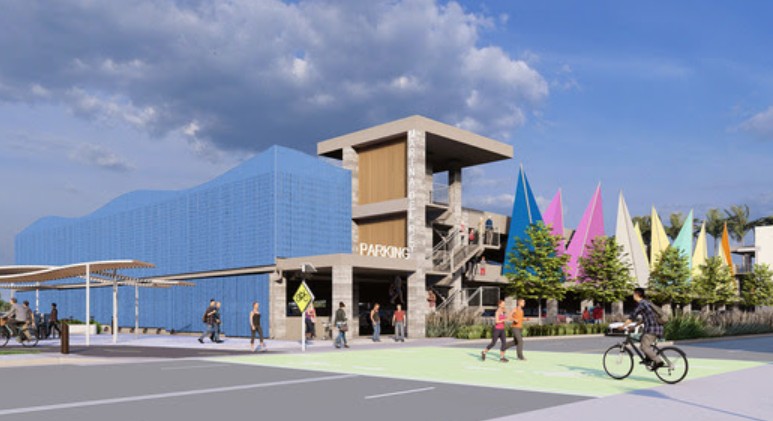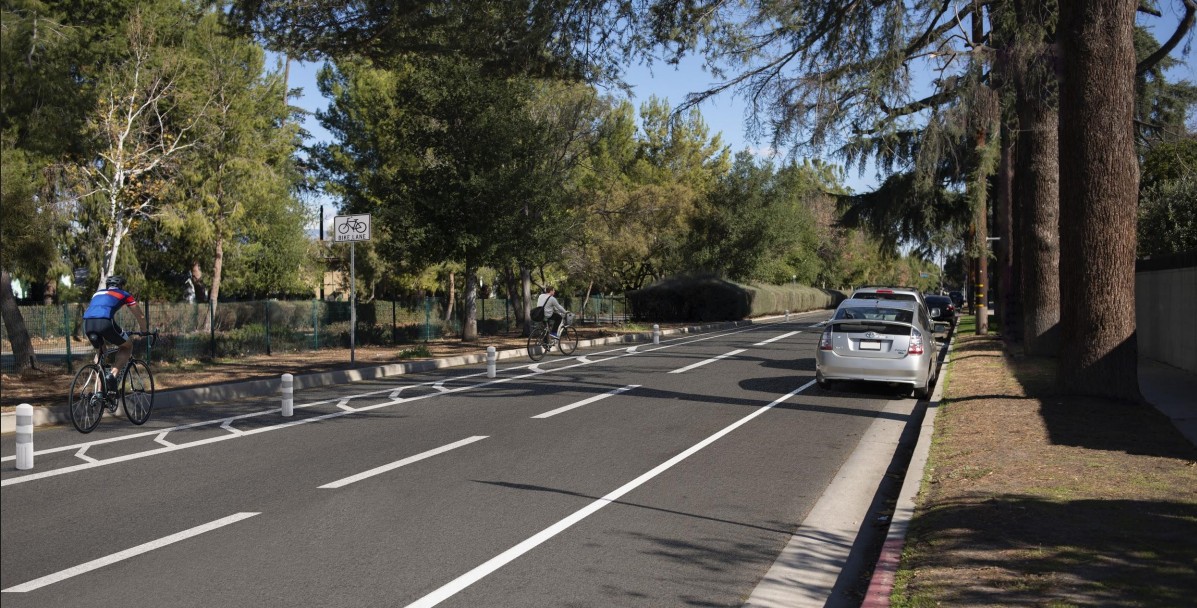Hey! Did you hear that Southern California's big freeway era is over?
Spoiler: it isn't.
Caltrans and the Orange County Transportation Authority just opened their 16-mile $2.16 billion 405 Freeway widening project, which added four additional lanes from Seal Beach to Costa Mesa. Like much freeway expansion in whiter, more well-off communities, this project did not include any full property acquisitions (just partial takings "slivers," mostly from parking lots), as it was nearly entirely within Caltrans right-of-way.
The press are framing this 405 project as the end of an era.
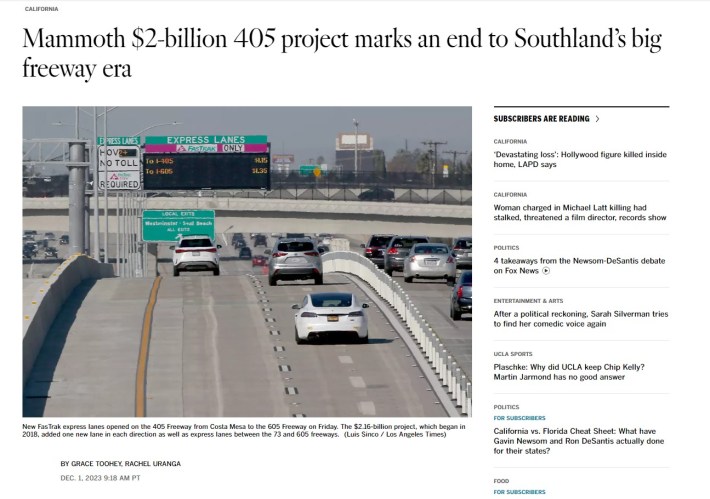
The L.A. Times headline says the "Mammoth" expansion "marks an end to Southland's big freeway era." The article says the project "wrapped up one of the region’s last major freeway expansions as transportation officials move toward more sustainable and efficient investments." It then quotes USC professor Marlon Boarnet, “The era of the big highway projects are over... The big, big highway projects are going to become more rare. … [Future work] is going to become much more part of a more balanced system.”
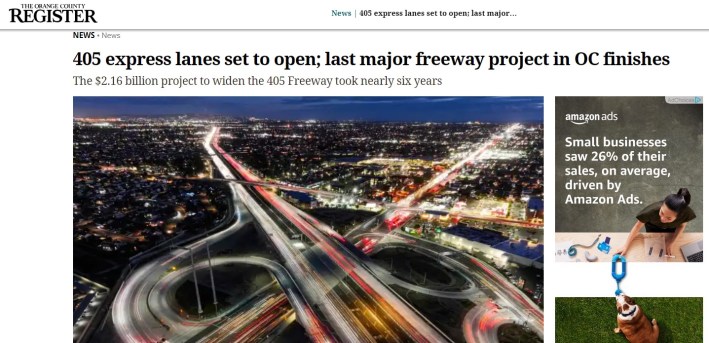
The OC Register headline terms the 405 widening the "last major freeway project in OC." Register coverage quotes OCTA CEO Darrell Johnson “From a mega project standpoint, I think this is it... This is the last large freeway project that we have planned.”
"End of Freeway Era" Sounds Familiar
Didn't the media already report the end of the freeway era?
Yes. It was back in 1993, when Southern California completed another $2.2 billion "mammoth" freeway project: the 105 or Century Freeway.

At the time, the New York Times quoted UCLA professor Martin Wachs, "There will still be a need for freeways in the future, but they will undoubtedly be only in the fringes of regions."
For the 105, Caltrans demolished thousands of residences across South Los Angeles, resulting in lawsuits and a court mandated consent decree where the department committed to making space for what would become the Metro C Line light rail, plus investing in housing, training and hiring local residents, and more.
"We got a freeway-transitway, homes, employment in the community," Caltrans Project Manager Jack Hallin stated, "Could we do it again? Probably not."
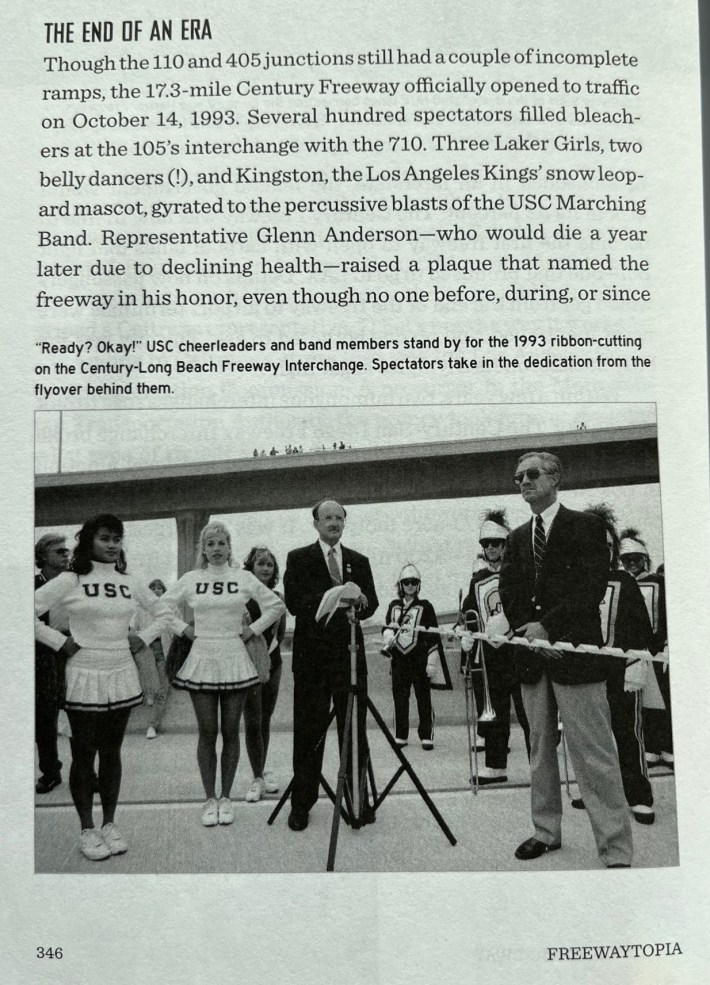
Freewaytopia, by Paul Haddad, quotes contemporaneous accounts of the 105 opening. Caltrans' Jerry Baxter stated, "There probably won't be another freeway built in an urban area... The cost is too high, and the environmental issues are still paramount." Transportation expert Arthur Bauer asserted, "The Century Freeway is a magnificent study of sort of the end of an era and the beginning of another."
The L.A. Times called the 105 "the capstone in California’s vast freeway system." Recently reporting on the today's freeway expansions continuing to displace Black/Latino neighborhoods, the paper stated that the 105 is "supposed to be among the last of its kind."
Caltrans Never Stopped Expanding Freeways - Aided by Metro and OCTA
But the freeway era didn't come anywhere near ending in the 1990s. Caltrans continued to spend copious state and federal funding to expand highways. Countywide sales taxes in Los Angeles and Orange counties funneled even more money into the well-oiled machine that continued to tear down homes to add more and more lanes.
Since the 1990s, Caltrans leaders give lip service to their agency turning over a new leaf, but the department's massive car capacity projects show these pledges to be false.
The gaslighting continues today. In 2020 Caltrans Director Toks Omishakin stated that, "In urban areas: Yes, we should be done with building new lane miles. There we should be looking for other ways to increase capacity, through bus or rail transit, or other ways." This year, current Caltrans Director Tony Tavares told The New York Times, “Caltrans in the past was very focused on dealing with congestion primarily... We have since pivoted, completely done a 180.”
In addition to massive widening projects all over, another telling sign is that these statements don't reflect what Caltrans is doing internally: Tavares' department just effectively fired the person most responsible for making that 180, Deputy Director of Planning and Modal Programs, Jeanie Ward-Waller.
Note that it is within Caltrans' power to actually make good on these promises. The rest of this post is mostly about Metro and OCTA. If statewide Caltrans doesn't want the wholescale freeway expansions that these countywide transportation agencies are pushing, Caltrans could reign them in. Caltrans could mandate significant bus or rail transit components (like Caltrans did on the 105), but it continues to proceed, in collaboration with county agencies, on numerous projects that focus on increased freeway capacity.
Southland Freeway Expansion Going Strong
Metro, OCTA and Caltrans are widening so many Southland freeways that it's difficult to list them all.
It's maybe hard to parse what constitutes a "major" freeway expansion. Is hundreds of millions enough? A half-billion, a billion, a couple billion?
L.A. County Metro, partnering with Caltrans, has all those bases covered.
Metro has long promoted its "$10+ Billion" expansion of the 605 Freeway, which includes miles and miles of intersecting freeways: the 5, 10, 60, 91, 105, and 405.
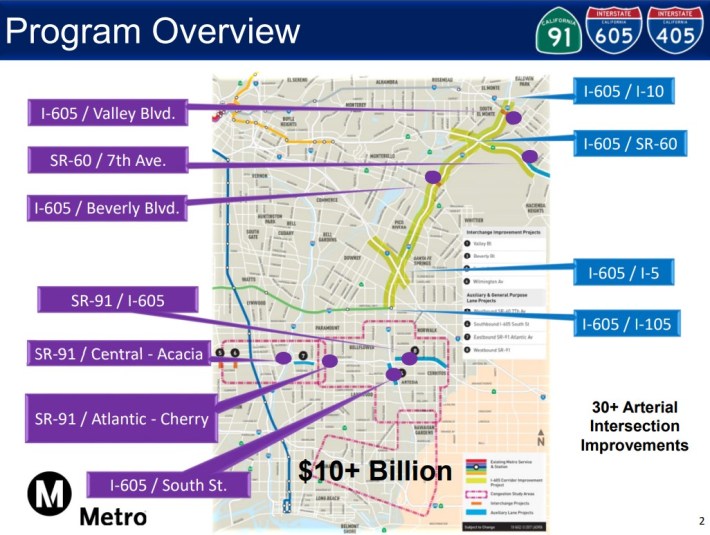
Remember all those transit/housing/employment components included when Caltrans built the 105? Well, they haven't surfaced yet for the 605 mega-mammoth-project. Metro has been teasing maybe including some potential transit/bike/walk components (sometimes claiming nonexistent multimodal features) for some parts of its 605 expansion. Further 605 mega-project components may be shared at corridor-wide community meetings announced for this Winter.
Not all of Metro's freeway widening projects cost $10+ billion. Here's a run-down of several current Metro freeway widenings in rough order of cost:
- $1.8 billion: 5 Freeway widening South. This year Metro and Caltrans finished adding four more lanes to the 5 between Orange County and the 605. The project acquired 423 full parcels, mostly homes and apartment buildings now demolished. Metro and Caltrans quietly deleted their project website, but haven't celebrated this project's completion.
- $1.3+ billion: 5 Freeway widening - North. Metro and Caltrans are nearing completion widening the 5 mainly through Burbank. The project has been plagued by delays and cost overruns.
- $679 million 5 Freeway widening - North County.
- ~$500 million 57/60 Freeways widening.
- ~$220+ million 91 Freeway widening. Last month, Metro approved $174 million for this expansion, adding to earlier approvals.
Metro and Caltrans are also building and/or planning capacity expansion projects on the 10, 14, 71, 91 (multiple projects), 105, 110, 138, and 405 (multiple projects) Freeways.
The southland's mythical post-freeway era hasn't shown up yet in Metro's annual freeway project capital budget, which continues to increase year after year.
Three decades after the 105 opened, agencies are still fighting not to provide mitigation - the "transitway, homes, employment" components demanded by communities along the 105. Metro and Caltrans approve many freeway expansion projects via loopholes, claiming a "Finding of No Significant Impact" (FONSI) even on projects slated to tear down homes. The loopholes (mainly adding numerous "auxiliary lane" segments) allow agencies to minimize community input processes, and then to claim that mitigation is not needed, because (they claim) freeway widening would benefit the low-income communities it harms.
Despite CEO Darrell Johnson's "no more large freeway projects planned" statement, OCTA and Caltrans are nowhere near done widening numerous Orange County freeways. Just because OCTA finished a $2 billion project, the agency hasn't suddenly turned away from its extensive highway expansion portfolio. Per OCTA's Freeway Projects webpage, OCTA and Caltrans are currently expanding:
- 5 Freeway - from 73 Freeway to El Toro Road
- 5 Freeway - from San Diego County Line to Avenida Pico
- 5 Freeway - from the 405 Freeway to the 55 Freeway
- 5 Freeway - El Toro Road area
- 405 Freeway - from 5 Freeway to 55 Freeway
- 55 Freeway - from 405 Freeway to 5 Freeway
- 55 Freeway - from 5 Freeway to 91 Freeway
- 57 Freeway - from Orangewood Avenue to Katella Avenue
- 57 Freeway - northbound from Lambert Road to Tonner Canyon Road
- 91 Freeway - from the 241 Tollway to the 15 Freeway
- 91 Freeway - from the 57 Freeway to the 55 Freeway
- 605 Freeway - I-605/Katella Avenue Interchange
The new era looks just like the past era, with OCTA continuing to spend billions of dollars on freeway expansion, while the Orange County's transit options remain meager.
Though OCTA and Metro are bringing billions of dollars to the freeway project table, Caltrans itself is also spending other state and federal money (sometimes combined with county funds) to enhance and expand freeways, including the $300 million "Super 605" project, 71 Freeway widening in Pomona ($350+ million for two phases), 405 Freeway widening in Torrance ($62 million), and more.
“The reports of my death are greatly exaggerated”
Don't believe what you read about the these freeway eras that keep ending with mammoth projects expanding capacity for drivers to spew greater and greater tailpipe emissions. Metro's own accounting shows that increasing greenhouse gas emissions from Metro freeway expansion will negate all emission benefits from Metro transit expansion. OCTA's emissions picture is much worse.
Mega-projects like the 405, 105, and 605 expansions are just what Caltrans, OCTA, and Metro have done, are doing, and keep making plans to keep on doing.
These projects enable and induce more driving, worsening traffic congestion and pollution. Then the agencies respond to these self-induced problems by continuing to push the same warped solution: keep adding more and more lanes. One more lane. Then the era is over... until the next one more lane. And the next.
Meanwhile, low income communities of color suffer demolitions, unhealthy air, unsafe streets, and inadequate transit. And the climate bakes.
